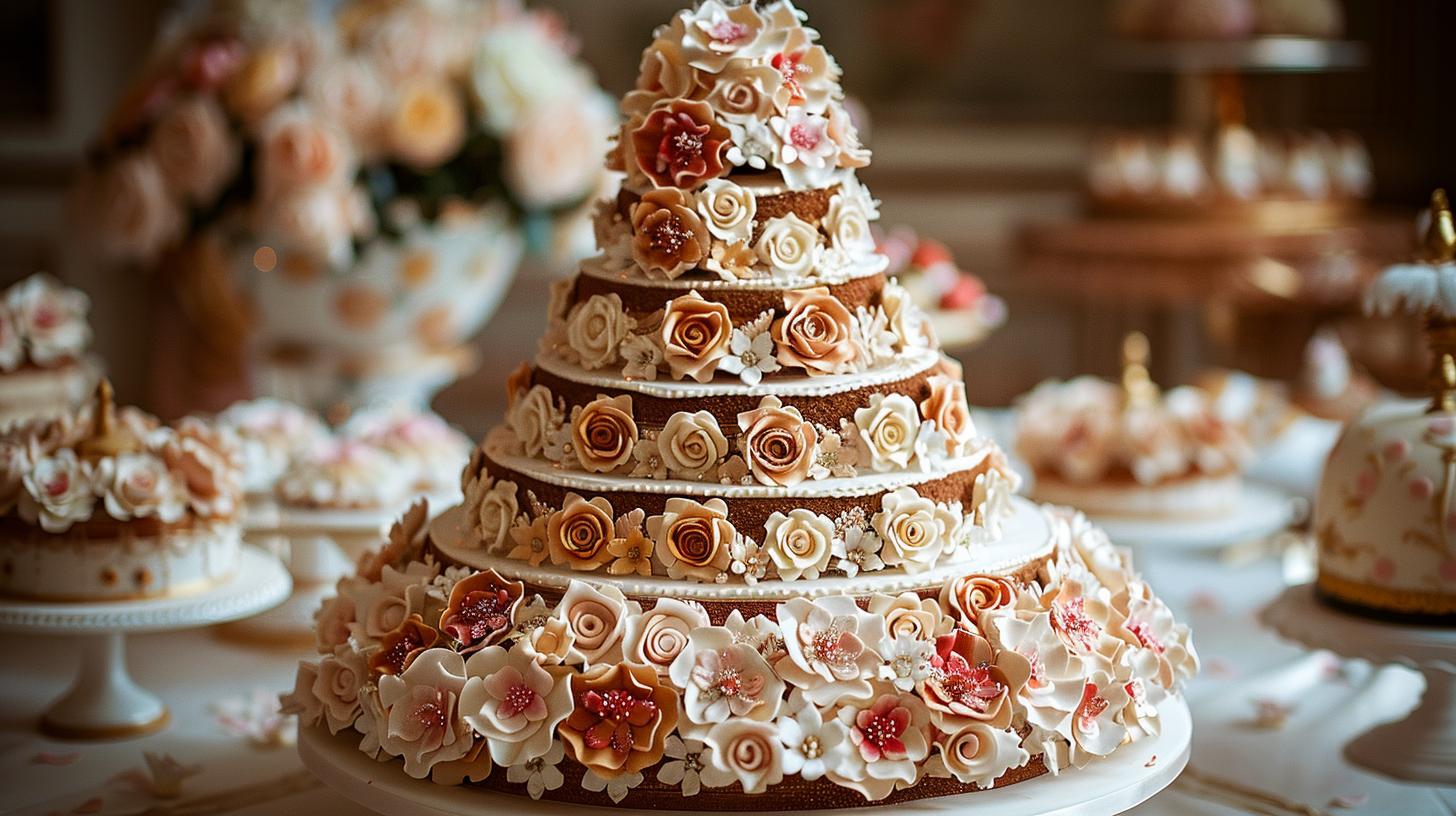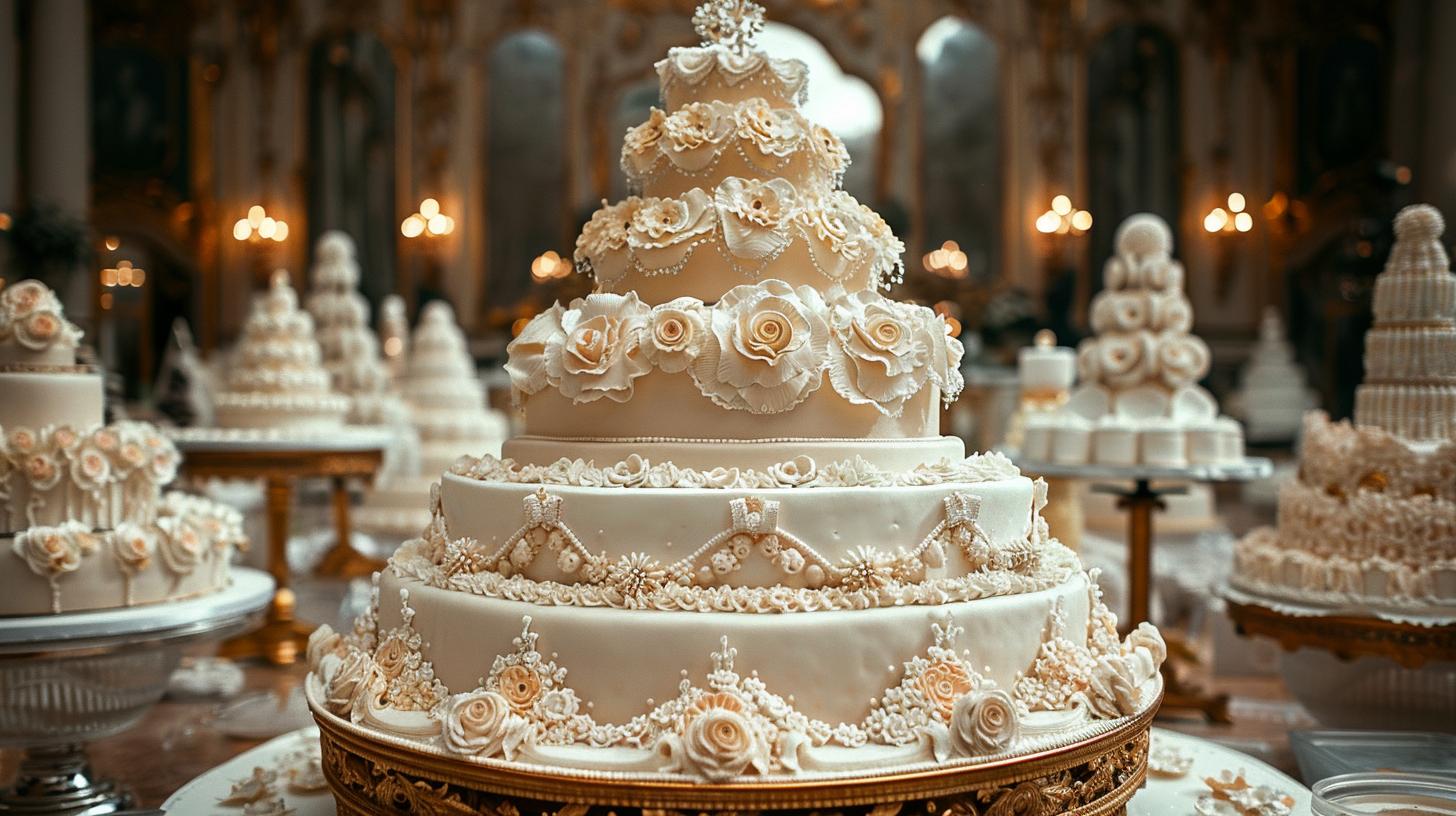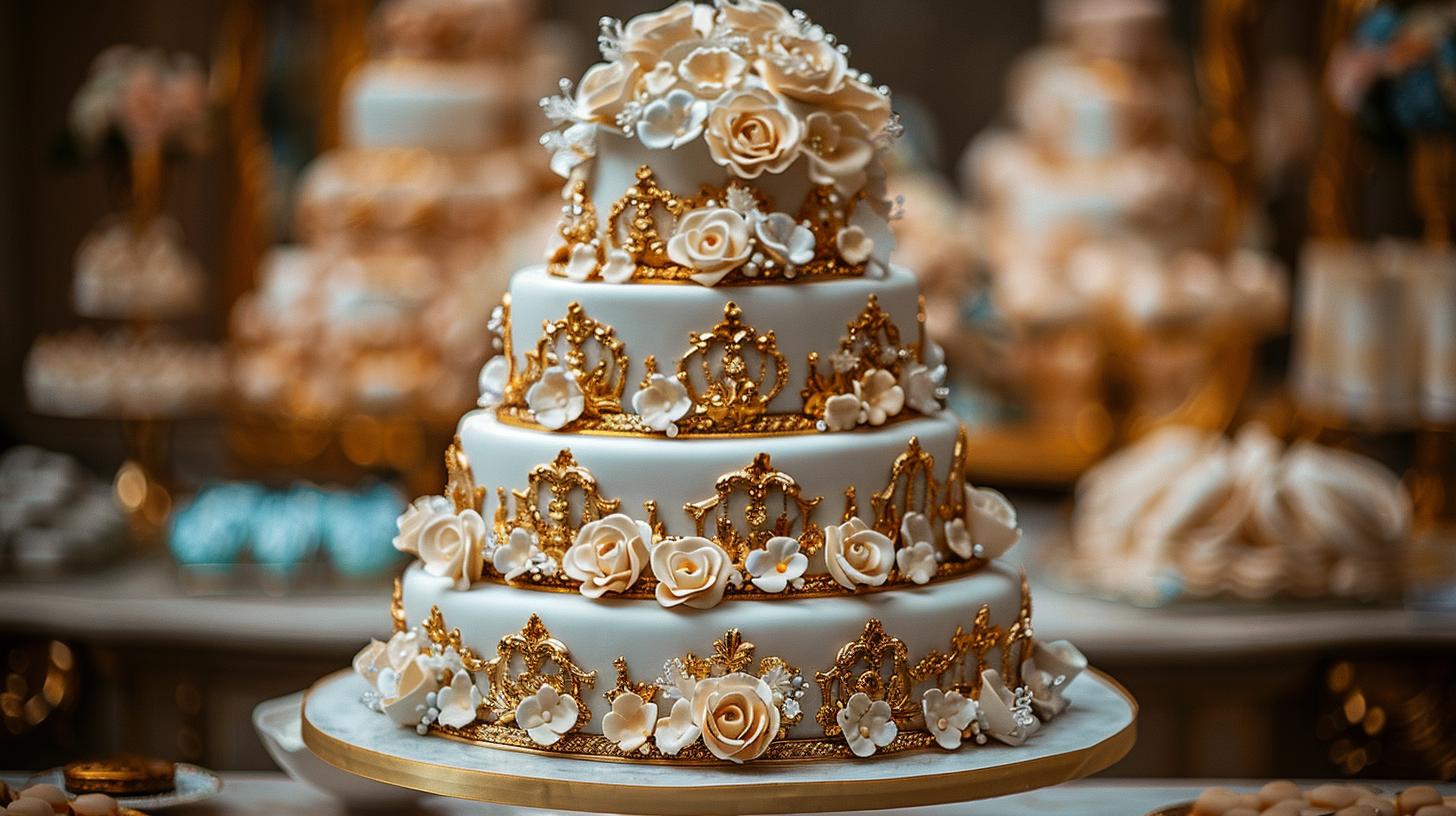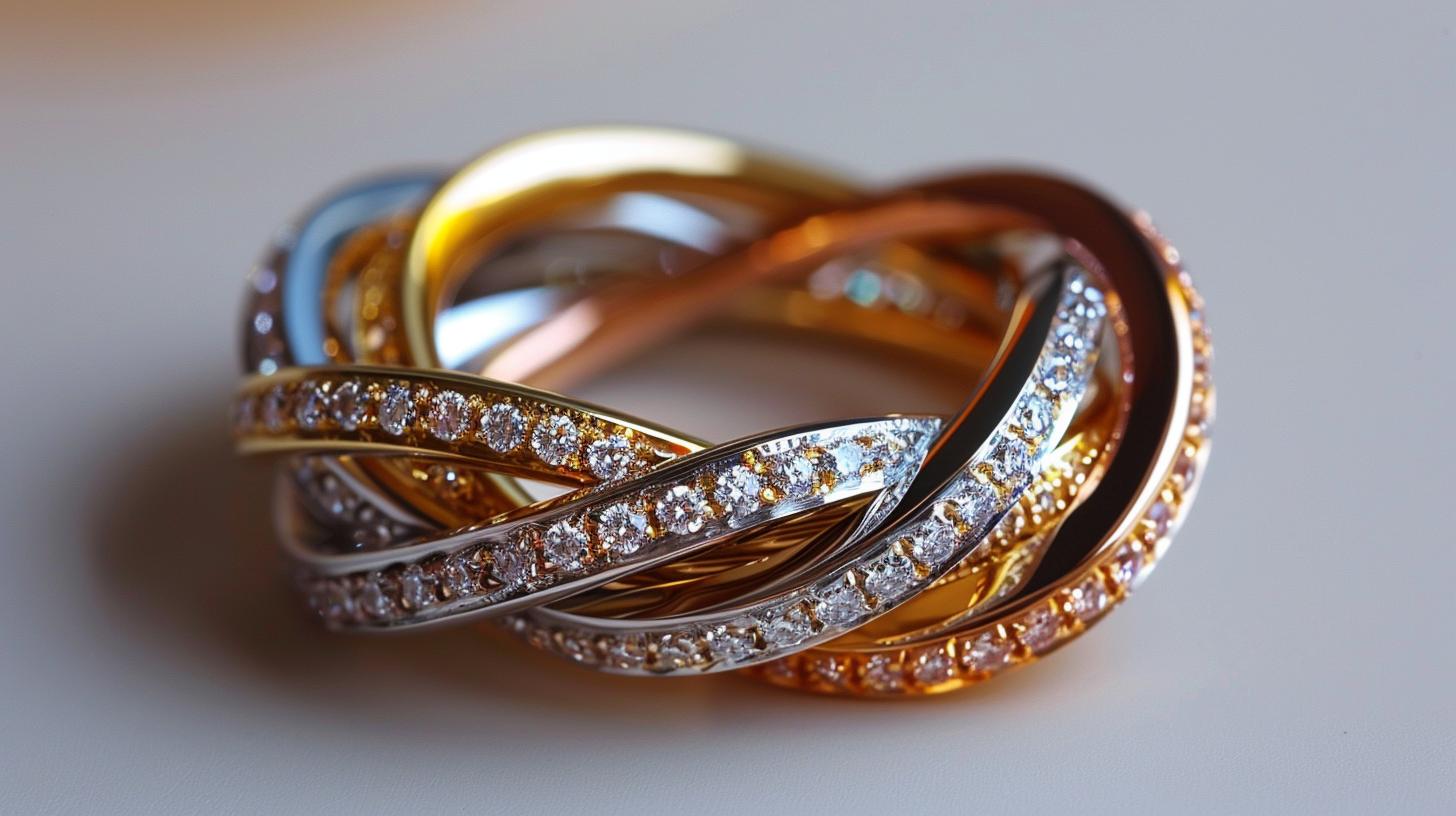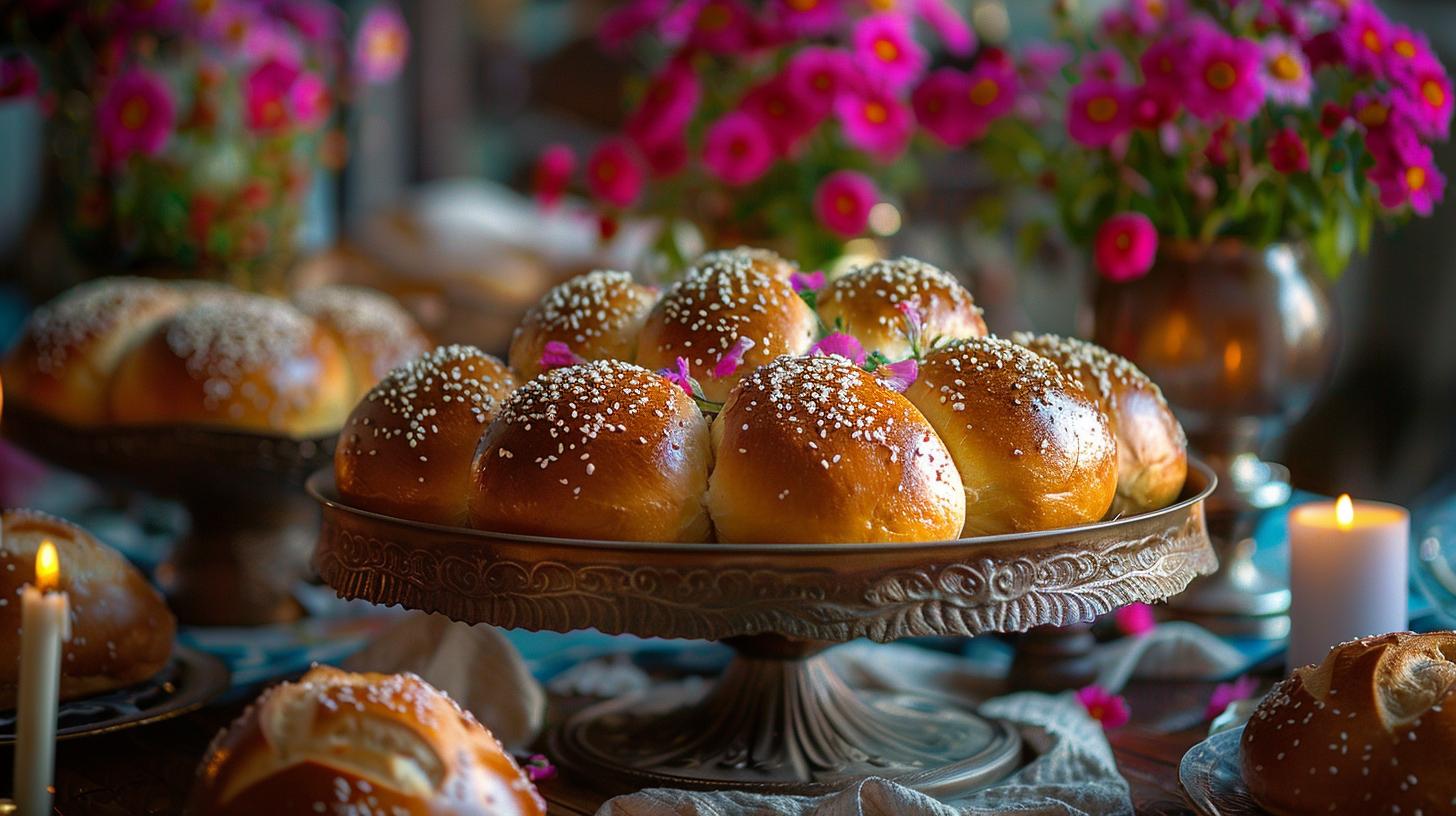Russian Wedding Cake: A Sweet Tradition and Recipe Guide
Russian Wedding Cakes, also known as Russian Tea Cakes, are a beloved dessert with deep cultural roots in Eastern Europe. These sweet treats are often served at weddings and family celebrations, symbolizing love and unity.
The preparation of Russian Wedding Cakes involves a simple blend of ingredients, making them accessible to bakers of all skill levels. Their delightful flavor and snowy appearance make them a timeless favorite in many households.
History and Cultural Significance
The history and cultural significance of Russian Wedding Cakes intertwine with rich traditions and celebrations. These delightful treats hold a special place in various festivities, particularly weddings, showcasing the importance of family and community bonds.
Roots in Eastern Europe
Russian Wedding Cakes trace their roots back to Eastern European traditions, especially within Russian and Lithuanian cultures. The preparation and consumption of these confections date back generations, where they have been cherished during significant life events.
Each family often adds its own touch to the recipe, reflecting personal tastes and cultural backgrounds.
Historically, cookies resembling Russian Wedding Cakes were prepared for celebrations and gatherings as early as the medieval period.
The sweets were not only a culinary delight but also represented hospitality and generosity, often shared among friends and family during festive occasions.
Symbolism in Weddings
In wedding ceremonies, Russian Wedding Cakes serve deeper symbolic meanings. They represent love, unity, and the sweet start of a couple’s new life together. Traditionally, the sharing of these cakes during the wedding reception symbolizes the merging of families and the joy surrounding the union.
The snowy appearance of the powdered sugar coating signifies purity and new beginnings, making these desserts ideal for such significant occasions. The act of sharing these treats among guests also embodies the idea of spreading happiness and blessings.
Family Traditions
Family traditions around making and serving Russian Wedding Cakes vary widely. Many families have their own recipes passed down through generations, making these cakes an integral part of holiday celebrations, birthdays, and other gatherings beyond weddings.
This continuity of tradition highlights the important role that food plays in the celebration of family and life events.
How to Make Russian Tea Cakes
Creating Russian Tea Cakes is a straightforward process that involves simple ingredients and techniques. This section outlines the essential equipment required and provides detailed step-by-step instructions for achieving the perfect batch of these delightful treats.
Essential Equipment
To make Russian Tea Cakes, having the right equipment is crucial for the best results. The following items are recommended:
- Mixing bowls
- Measuring cups and spoons
- Electric mixer or whisk
- Baking sheets
- Parchment paper or silicone baking mats
- Cookie scoop or spoon
- Cooling rack
Step-by-Step Instructions
This section breaks down the process into clear and easy-to-follow steps to ensure a successful outcome.
Preparing the Dough
Start by gathering all the ingredients. The key components include softened butter, powdered sugar, vanilla extract, all-purpose flour, walnuts, and a pinch of salt. In a mixing bowl, cream the butter with powdered sugar until the mixture is light and fluffy.
Next, add in the vanilla extract and mix until well combined. Gradually incorporate the flour and salt, blending until the mixture forms a dough. Fold in the finely chopped walnuts gently, ensuring they are evenly distributed throughout the dough.
Shaping the Balls
Once the dough is ready, it’s time to shape the cookies. Use a cookie scoop or your hands to form small balls about one inch in diameter. Ensure they are uniform in size for even baking.
Place the shaped dough onto prepared baking sheets, spacing them about two inches apart as they will spread slightly during baking.
Baking Process
Preheat the oven to 375°F (190°C). Bake the cookies for 10 to 12 minutes, or until they are just lightly golden on the bottom. It’s important not to overbake; the tops should remain pale.
Final Touches
While the cookies are still warm, roll them in powdered sugar for a delightful finish. Allow them to cool completely before dusting them again with more powdered sugar if desired. This not only enhances their appearance but also adds an extra layer of sweetness.
These steps will ensure that the Russian Tea Cakes are flavorful, tender, and visually appealing, making them a perfect addition to any celebration or gathering.
Ingredients
The ingredients used in Russian Wedding Cakes are fundamental to achieving their distinctive flavor and texture. Each component plays a significant role, ensuring the final product is a delightful treat.
Below is a detailed breakdown of each ingredient and its importance.
Butter and Its Importance
Butter is a critical ingredient in Russian Wedding Cakes, contributing to both flavor and texture. The use of unsalted butter is preferred, allowing for more control over the saltiness of the final product.
High-quality butter enhances the creaminess and richness of the dough, leading to a more enjoyable eating experience. The buttery base also helps create a tender and crumbly texture, which is essential for these delicate cookies.
Variety of Nuts
Nuts add a unique crunch and flavor that elevate the overall taste profile of Russian Wedding Cakes. The choice of nuts can vary, allowing for personalization based on individual preferences.
Traditional Choices
Traditionally, finely chopped walnuts are used in the recipe, providing a classic nutty flavor that complements the sweetness of the cookies. Other popular options include almonds and pecans, which can create different textures and tastes while maintaining the essence of the treat.
Alternative Options
Additionally, incorporating different nut types can result in a flavorful surprise that may appeal to those looking for something new.
Flour and Its Role
All-purpose flour serves as the backbone of Russian Wedding Cakes, providing the necessary structure. The texture of the flour is vital; too much gluten development can lead to tough cookies instead of the desired crumbly consistency.
Vanilla Extract for Flavor
Vanilla extract is an essential flavor enhancer in these cakes. It brings warmth and depth to the overall taste, ensuring a well-rounded flavor profile. Quality vanilla extract, whether pure or imitation, significantly influences the cookies’ aroma and taste, making it a key ingredient in the recipe.
Sweetening with Powdered Sugar
Powdered sugar is used not only to sweeten the dough but also to create the signature snowy finish on the cookies. Its fine texture allows for easy rolling of the baked goods, ensuring they are beautifully coated.
Throughout the baking process, powdered sugar dissolves seamlessly into the dough, contributing to a sweet yet subtle flavor that pairs perfectly with the richness of the other ingredients.
Recipe Variations
Exploring variations of the traditional recipe allows for customization and creativity, making each batch unique. Different approaches can cater to dietary restrictions, flavor preferences, and seasonal inspirations.
Gluten-Free Alternatives
For those with gluten sensitivities or celiac disease, adapting the recipe to be gluten-free is entirely feasible. Using alternatives to all-purpose flour can yield equally delicious results.
- Use a gluten-free all-purpose flour blend, which typically contains a variety of starches and flours.
- Almond flour can add a nutty flavor while providing a gluten-free option, enhancing the richness of the cookies.
- Coconut flour is another option, though adjustments in liquid may be necessary due to its absorbent nature.
When substituting flours, it’s important to consider the texture and moisture content, as these factors can affect the final product.
Experimentation may be needed to perfect the balance.
Adding Chocolate Chips
Incorporating chocolate chips into the mixture transforms the flavor profile, appealing to those who enjoy chocolate. This variation introduces a delightful contrast to the traditional buttery and nutty taste.
- Use semi-sweet or dark chocolate chips for a richer experience.
- For a fun twist, try mint chocolate chips or white chocolate chips for added sweetness.
- Combine chocolate with nuts for an even more complex flavor combination.
Adding chocolate chips can be done easily by folding them into the dough just before shaping the balls.
This ensures an even distribution throughout the cookies.
Seasonal Flavors
Seasonal flavors can enhance the cookies, making them appropriate for various holidays and celebrations. Experimenting with different spices and additions can provide a fresh take on the classic recipe.
- In the fall, incorporating pumpkin spice or cinnamon can evoke the essence of the season.
- During the winter holidays, adding flavors like peppermint extract or nutmeg can create a festive atmosphere.
- Spring and summer variations might include incorporating lemon zest or coconut for a bright and refreshing taste.
These flavor adaptations not only resonate with seasonal festivities but can also delight guests with unexpected twists on a beloved treat.
Tips for Perfect Russian Tea Cakes
Mastering the art of Russian Tea Cakes involves attention to detail and quality ingredients. The following tips provide essential guidance for achieving the best results when making these delightful treats.
Selecting the Best Ingredients
Using high-quality ingredients is fundamental for achieving the best flavor and texture in Russian Tea Cakes.
Here are some key components to consider:
- Butter: Always opt for unsalted butter. The flavor of the butter significantly affects the overall taste. A premium quality butter provides richness that is essential in these cookies.
- Nuts: Choose fresh nuts to enhance the flavor.
Pecans and walnuts are traditional, but ensure they are finely chopped for an even distribution in the dough.
- Flour: Use all-purpose flour for the right texture. Ensure the flour is measured accurately, as this can impact the consistency of the dough.
- Powdered Sugar: This ingredient adds sweetness and gives the cookies their characteristic coating.
Invest in a good quality powdered sugar for the best results.
- Vanilla Extract: Always use pure vanilla extract instead of imitation. It elevates the flavor profile and adds depth to the cookies.
Achieving Ideal Dough Consistency
The texture of the dough is crucial for the end result of these cookies.
Here are some tips to ensure it reaches perfection:
- Mixing Techniques: Cream the butter and powdered sugar until light and fluffy. This step incorporates air, which is essential for a tender cookie.
- Chilling the Dough: If the dough feels too soft or sticky, refrigerate it for about 30 minutes before shaping.
This helps the cookies hold their shape while baking.
- Not Overmixing: When adding flour and nuts, mix just until combined. Overmixing can lead to tougher cookies.
Storage and Freezing Tips
Proper storage extends the freshness of Russian Tea Cakes, allowing them to maintain their flavor and texture.
Consider the following methods:
- Room Temperature Storage: Store the cookies in an airtight container at room temperature for up to one week. Keep them in a cool, dry place away from direct sunlight.
- Freezing: To freeze, place the cooled cookies in a single layer on a baking sheet.
Once frozen, transfer them to a freezer-safe container. They can be stored this way for up to three months.
- Thawing: When ready to enjoy, remove the cookies from the freezer and let them sit at room temperature for about 30 minutes before serving.
Frequently Asked Questions
This section addresses some common inquiries surrounding the preparation and enjoyment of Russian Tea Cakes.
Understanding these aspects can enhance the baking experience and ensure a delightful outcome.
Common Mistakes and Fixes
When making Russian Tea Cakes, several common errors can occur. Recognizing and correcting these can result in a superior batch. Here are a few tips:
- Using Cold Ingredients: For the best texture, ensure that the butter is softened to room temperature before mixing.
Cold butter can lead to a denser, less tender cookie.
- Overmixing the Dough: Mixing the dough too vigorously can lead to tough cookies. Blend the ingredients just until incorporated.
- Incorrect Oven Temperature: An inaccurate oven can affect baking time.
Always use an oven thermometer to ensure the correct temperature.
- Skipping the Cooling Phase: Rolling the cookies in powdered sugar while they are still warm may cause the sugar to melt.
Allow them to cool slightly before dusting.
How to Serve Russian Tea Cakes
These treats can be enjoyed in a variety of settings. They are perfect for special occasions or casual gatherings. Here are some serving suggestions:
- Accompaniment with Tea or Coffee: The richness of Russian Tea Cakes pairs beautifully with a warm cup of tea or coffee, enhancing the overall tasting experience.
- As a Dessert Table Addition: Include them on dessert tables at celebrations, allowing guests to enjoy these sweet bites alongside other treats.
- Decoration for Festive Occasions: Consider dusting them with additional powdered sugar just before serving for a visual appeal, making them look even more inviting.
Substituting Ingredients
Certain ingredient substitutions may be necessary based on dietary preferences or ingredient availability.
Here are some alternatives:
- Butter: For dairy-free options, coconut oil or vegan butter can work, though it may alter the flavor slightly.
- Nuts: If allergies are a concern, seeds such as sunflower seeds can replace nuts while still providing a pleasant crunch.
- Flour: Gluten-free flours can be used to create a suitable alternative for those with gluten sensitivities; however, the texture may vary.
- Sugar: For a healthier option, powdered erythritol or coconut sugar can substitute powdered sugar for rolling.
Recipe Ratings and Feedback
Gathering feedback on recipes enhances the cooking experience and helps others discover the flavors of traditional desserts.
Ratings and comments provide invaluable insights from those who have tried the recipes, supporting the community through shared culinary experiences.
Rate This Recipe
Rating the recipe allows bakers to share their experiences honestly. A straightforward star rating system typically works best. Participants can express their satisfaction based on several criteria:
- Taste: How well the flavors come together.
- Texture: The ideal consistency of the baked goods.
- Ease of Preparation: The simplicity or complexity of following the recipe.
- Overall Enjoyment: General satisfaction with the final product.
A high rating often indicates that the recipe resonates well with those who try it, serving as a guide for newcomers seeking reliable baking options.
Recipe Ratings without Comments
Displaying raw ratings without accompanying comments offers an at-a-glance perspective on how widely appreciated the recipe is. This section can include:
- Average Rating: A numerical value that reflects the collective scoring of the recipe.
- Number of Ratings: The total tally of individuals who have submitted a score.
This information is essential for those who might be hesitant to try a new recipe, as it showcases the communal approval and encourages experimentation with the dish.
Pairing and Serving Suggestions
Finding the perfect pairings for Russian Wedding Cakes enhances the overall experience of enjoying this delightful treat. The right beverages and side dishes can complement the flavors and textures, creating a harmonious balance that elevates any occasion.
Beverages that Complement
When selecting beverages to accompany Russian Wedding Cakes, consider options that enhance their rich, buttery flavor while contrasting the sweetness. Here are some ideal choices:
Tea
A warm cup of tea, such as Earl Grey or Chai, pairs beautifully. The spiced or floral notes will enhance the tastes of the cakes.
Coffee
Rich coffee, whether brewed or espresso, can balance the sweetness. The slight bitterness of coffee complements the dessert’s flavors effectively.
Milk
A classic choice, cold or warm milk works well to soften the sweetness and enrich the overall flavor experience.
Citrus Juices
Fresh orange or lemon juice can provide a refreshing contrast. Their acidity cuts through the richness, creating a delightful balance.
Sparkling Water
For a lighter option, sparkling water with a hint of flavor can cleanse the palate between bites, allowing the nuances of the cake to shine.
Side Dishes
In addition to beverages, side dishes can enhance the experience of enjoying Russian Wedding Cakes. These dishes can introduce additional flavors and textures, creating a more rounded serving. Consider the following options:
Fruit Salad
A simple fruit salad adds freshness.
The natural sweetness of fruits like berries or citrus can complement the richness of the cakes.
Cheese Platter
Serving a cheese platter with a variety of cheeses provides savory textures. Brie or soft cheeses paired with some nuts can create a delightful contrast.
Nut Medley
A variety of roasted nuts, such as almonds or pistachios, can add crunch and richness, echoing the nutty elements within the cakes.
Light Salads
Refreshingly light salads with vinaigrettes can act as a palate cleanser. The acidity of the dressing brings balance to the sweeter notes of the cake.
Chocolate Dipped Fruits
Chocolate-dipped strawberries or bananas offer a decadent contrast. The smoothness of chocolate pairs wonderfully with the soft texture of the cakes.
Nutritional Information and Allergen Warnings
This section provides essential information regarding the nutritional content and potential allergens found in Russian Wedding Cakes. Understanding these details can help individuals make informed decisions regarding their consumption.
Caloric Content
The caloric content of Russian Wedding Cakes can vary based on the specific ingredients and portion sizes.
On average, a single serving (one cookie) can contain approximately:
- Calories: 100-120
- Fat: 6-8 grams
- Carbohydrates: 12-15 grams
- Protein: 1-2 grams
- Sugar: 4-6 grams
The primary sources of calories in these cookies come from the butter and nuts, which contribute to both the richness and flavor of the final product.
Adjusting the quantities of these ingredients can help alter the caloric content for those seeking lighter options.
Allergen Information
Individuals with food allergies should be aware of the common allergens present in Russian Wedding Cakes. The primary allergens include:
- Butter: Contains dairy, which can be problematic for those with lactose intolerance or dairy allergies.
- Nuts: Typically, walnuts or pecans are used, posing a risk for nut allergies.
Always check the specific type of nuts used.
- Gluten: Made with wheat flour, these treats are not suitable for individuals with gluten intolerance or celiac disease.
- Eggs: While traditional recipes may not require eggs, some variations might include them, which can be a concern for those with egg allergies.
- Sugar: Those with diabetes or sugar sensitivity should consider the sugar content, as traditional recipes use powdered sugar for coating.
To ensure safety, it is advised to clearly label any homemade versions and to communicate with guests regarding potential allergens.
Substitutions can be made to accommodate dietary restrictions, such as using almond flour for a gluten-free option or dairy-free butter. Awareness of these aspects enhances the enjoyment while minimizing health risks.
For those who appreciate delightful pastries, the world of Russian desserts offers a variety of options that are sure to please. Here are some delicious suggestions to explore.
You’ll Also Love
More Russian Dessert Recipes
Russian cuisine boasts an array of sweet treats that define its culinary tradition.
These desserts often carry rich flavors and textures, making them perfect for any event.
Babushka’s Pirozhki
These small, stuffed pastries are a classic favorite. Filled with various ingredients—from meats to fresh fruits—they are perfect as appetizers or snacks.
Medovik (Honey Cake)
This layered honey cake, with its rich creamy filling, is something everyone should try. The combination of honey and smooth cream creates a delightful experience.
Sharlotka (Apple Cake)
This simple yet delicious apple cake is often enjoyed with a dollop of whipped cream. It’s moist, flavorful, and highlights the essence of Russian baking.
Related Tea Cake Recipes
Tea cakes are synonymous with comfort and warmth, often enjoyed during gatherings or simply as a treat with a cup of tea.
Below are some related recipes worth trying.
Classic Lemon Tea Cake
This light and zesty cake pairs perfectly with a cup of herbal tea, making it an ideal afternoon snack.
Chai-Spiced Tea Cake
Infused with the warm spices of chai, this cake offers a unique twist that elevates the tea experience.
Maple Pecan Coffee Cake
This moist cake, with its crunchy pecan topping and sweet maple flavor, is a delightful addition to any breakfast table or brunch.
.

